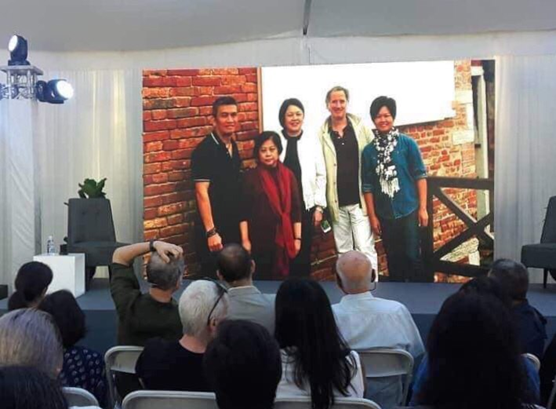Being a Woman in the Museum World (Aprille Tijam, Philippines, ITP 2019)
Written by Aprille Tijam, Senior Manager, Exhibitions and Collections, Ayala Museum (Philippines, ITP Fellow 2019)
Working in the museum sector in my country was quite unexpected and unplanned. In the late 80s, most of the girls I knew pursued careers in the medical field and worked overseas. I was encouraged to do the same. But I was always interested in the arts. So in college, I chose to study Philippine Arts not knowing that this would eventually lead me to the world of museums.
During the earlier part of my career, I had the chance to work in museum education, public relations, registration, and exhibitions. I mostly enjoyed being involved in preparing the exhibition components—handling of artworks, writing the captions and guide notes, installing the exhibition (only handling objects that I can physically manage), working with local and foreign artists, curators, and conservators. I was treated equally and with respect by my male museum colleagues. These experiences in the different aspects of museum work deepened my understanding of my industry, strengthened my passion and shaped my work ethic. I was lucky to have been mentored by some very strong women who were former museum directors. I saw in them the different qualities of leadership, style of managing people and programs, balancing critical issues, and knowing which battles to fight. These greatly influenced my own style of leadership.

EXHIBITION AT THE 57th VENICE BIENNALE
Now as a Senior Manager for Exhibitions and Collections at Ayala Museum, I bring the feminine sensitivity in my decision making — being flexible yet firm, showing empathy yet being able to draw the line where needed, being caring yet professional in my conduct, being a friend yet the supervisor, or when to speak or just listen. Women are more detail-oriented and this is highly important and in fact required in my job—having to prepare so many loan documents and insurance processing for so many lenders and donors during simultaneous exhibitions, negotiations with local and foreign counterparts, documentations and packing of artworks, travel arrangements for loans and traveling exhibitions, and more. And as a Filipina, I also attribute my work ethics to the Filipino concept of “asal”, defined as “sets of dominantly shared values and norms that Filipinos use as a common point of reference in expressing themselves”. And these I began to learn from my mother, my aunts, and my grandmothers.
In my museum, there are more women than men. We comprise 79%. I believe this contributes to the culture of openness and continuing dialogues in my workplace. These conversations—whether unanimous or differing points of view—are highly encouraged where respect for each other, no matter what the positions are, make the work easier, collaborative, engaging, and continue to be enjoyable and rewarding.

“OPTIMISM IS RIDICULOUS: THE ALTARPIECES” AT AYALA MUSEUM (2017)
As a woman museum practitioner in my country, I aspire for my work output, style, and processes of collaborations within my own museum and other museums, local and overseas, to become examples for my younger women colleagues in the museums sector. I hope to inspire them to work hard, be firm in their resolve, continue to bring passion to their work, and choose to pursue a career in the museum industry. And I believe that my role, and all those of my museum colleagues, contribute to the Philippine Development Plan (PDP) 2017-2022 where culture and values are acknowledged to strengthen social inclusion and equity, promoting cultural awareness, identifying, and inculcating values for the common good, cultivating creativity, and promoting culture-sensitivity in governance and development.
